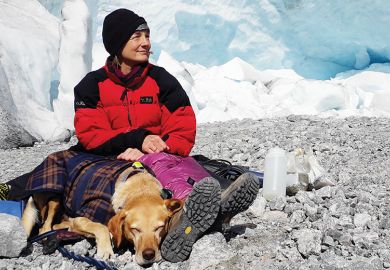This book provides more than 600 pages of description of fault rocks, including well over 1,000 photographs, mainly of microscopic thin-sections and electron microscope images, but including some field photographs. The "atlas" was compiled from submissions by 153 earth scientists, mostly internationally respected researchers on various aspects of faulting and shear zones.
The material is from 177 areas, mainly geographically defined, and arranged into broad subject areas based on the brittle, semi-brittle or ductile nature of the deformation. The project was started in 1981, when most of the material was commissioned, but not completed until 1998. During this period, a considerable amount of revision has taken place and much of the description is up to date, although the emphasis on ductile deformation fabrics clearly reflects the main interest at the time the project started.
What has been achieved? This atlas provides an excellent source of field reference. It contains a good blend of natural examples (dominant) and experimental studies, which are generally well described and clearly documented. Obviously, some contributions are more worthwhile than others, and there is some repetition of concepts. The editors have maintained a very high standard of photographs, which are well reproduced, but some of the maps and accompanying text are less carefully produced.
The strength of this book is in providing excellent documentation of fault rock textures - such as the development of mylonites, S-C fabrics, porphroclasts and pseudotachylite - appreciation of which advanced significantly in the 1980s. Less satisfactory is the treatment of some brittle features and fault gouge, which has advanced greatly in the past ten years and is important in, for example, the sealing of hydrocarbon reservoirs. Even some brittle features such as slickensides and crack/seal veining, which were well understood in the 1980s, get very brief treatment. In general there is little discussion of fluid flow, cementation and low-temperature alteration in fault zones.
In conclusion, this book is a valuable reference to fault rocks, and a source of lots of useful comparative material for anyone faced with their interpretation, particularly where ductile deformation dominates. As a teaching tool it will clearly have its uses, but there is too much material to hold the attention of undergraduates. A very careful selection of about 30 per cent of the material would form the basis of a more useful textbook. I would also have preferred to see a more process-oriented arrangement of the material, rather than the dominantly geographical one presented. These features, together with the relatively poor treatment of brittle deformation and fluid flow, will largely confine this book to the shelves of academic libraries and specialist researchers.
David Sanderson is professor of geology, Imperial College, London.
Fault-Related Rocks: A Photographic Atlas
Editor - Arthur W. Snoke, Jan Tullis and Victoria R. Todd
ISBN - 0 691 01220 2
Publisher - Princeton University Press
Price - £75.00
Pages - 617
Register to continue
Why register?
- Registration is free and only takes a moment
- Once registered, you can read 3 articles a month
- Sign up for our newsletter
Subscribe
Or subscribe for unlimited access to:
- Unlimited access to news, views, insights & reviews
- Digital editions
- Digital access to THE’s university and college rankings analysis
Already registered or a current subscriber?



